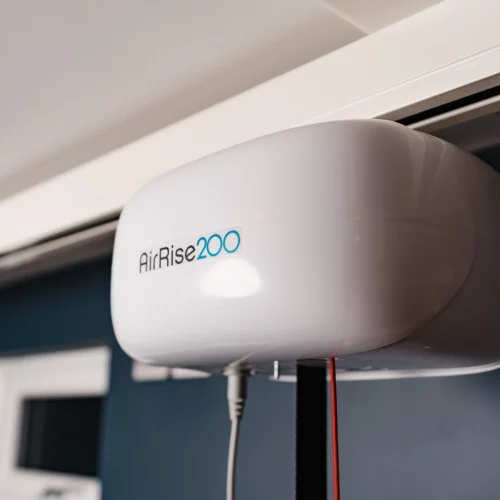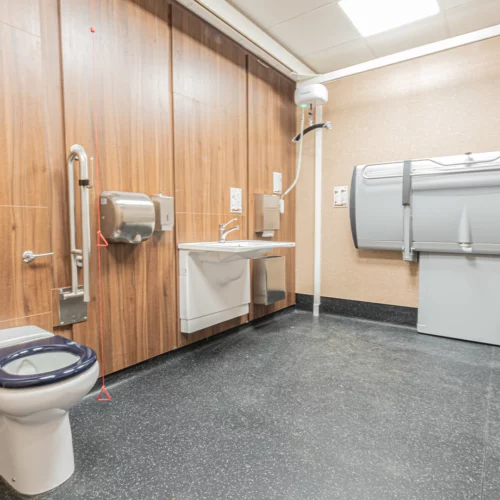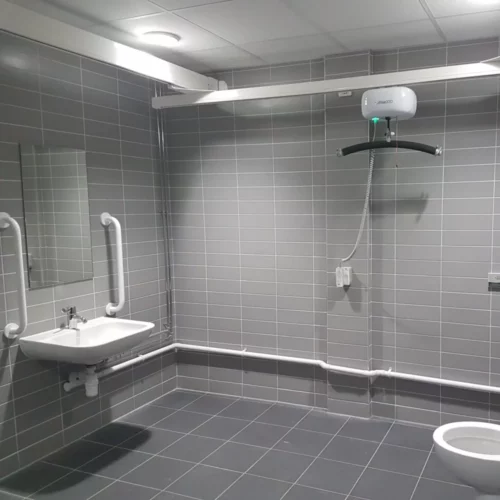Energy-Efficient Building Systems: Reducing Environmental Impact with Smart Systems
Energy-efficient building systems are at the heart of sustainable design. They play a critical role in reducing the environmental footprint of specialised facilities while optimising their functionality and comfort. The integration of low-energy lighting, such as LED technology, significantly reduces electricity usage. Heating, ventilation, and air conditioning (HVAC) systems that adapt to occupancy levels and time of day offer further energy savings. Additionally, renewable energy sources like solar panels, wind turbines, and geothermal energy provide a sustainable alternative to fossil fuels.
These systems offer substantial benefits, as they lower energy consumption and operational costs and contribute to creating self-sufficient and environmentally friendly buildings. To enhance efficiency, natural ventilation can be prioritised wherever feasible, reducing the reliance on air conditioning. Smart thermostats and occupancy sensors also play an important role in monitoring and optimising energy use. By incorporating these features, facilities can reduce environmental impact while ensuring users’ comfort and efficiency.
Sustainable Materials and Building Practices: Choosing Eco-Friendly and Durable Materials
The use of sustainable materials is essential for reducing the environmental impact of specialised environments while ensuring long-term durability. In high-traffic spaces like hospitals and care facilities, selecting materials that balance eco-friendliness with resilience is critical. Recycled or locally sourced materials are ideal for construction and furnishings, as they minimise the carbon footprint associated with production and transportation.
Non-toxic paints, finishes, and adhesives further improve indoor air quality, contributing to a healthier environment for occupants. Durable, eco-conscious materials like bamboo, reclaimed wood, and recycled steel provide both functionality and sustainability.
By prioritising sustainable materials, facilities can reduce the carbon footprint of their construction and renovation projects while promoting healthier indoor spaces. When choosing materials, durability and ease of maintenance are key considerations, as they ensure the longevity of these high-use environments. Natural and biodegradable materials are also excellent options, offering additional environmental benefits. This thoughtful approach to material selection demonstrates a commitment to both sustainability and the users’ needs.
Water Conservation Strategies: Minimising Water Waste in Specialised Facilities
Water conservation is another vital aspect of sustainable design, especially in facilities where water usage is high. Techniques and technologies that reduce water waste are not only environmentally responsible but also cost-effective. Installing low-flow taps, showerheads, and toilets helps to significantly decrease water consumption without compromising functionality.
Similarly, water-efficient irrigation systems for landscaping ensure that outdoor spaces remain lush and functional while minimising water use. Rainwater harvesting systems further support sustainability efforts by collecting water for non-potable uses such as irrigation and cooling.
The benefits of these strategies extend beyond environmental impact. Facilities that adopt water-saving practices often experience substantial reductions in water bills, contributing to their financial sustainability. To further enhance water conservation, native plants can be used in landscaping, as they require minimal irrigation. Additionally, installing water metering systems allows facilities to track and adjust their water consumption in real time, ensuring efficient usage. These strategies collectively support the creation of resource-conscious, sustainable environments.
Indoor Air Quality and Ventilation: Ensuring a Healthy and Comfortable Environment
In specialised environments that care for vulnerable people, such as hospitals or SEN schools, indoor air quality is paramount. Sustainable ventilation strategies not only improve air quality but also contribute to the overall health and comfort of occupants. Natural ventilation systems are particularly effective, as they allow fresh air to flow while maintaining energy efficiency. Advanced air purifiers and filtration systems play a crucial role in removing pollutants, allergens, and pathogens, ensuring a safe indoor environment. Green roofs and walls further enhance air quality by absorbing pollutants and providing natural temperature regulation.
Improved air quality reduces respiratory issues and enhances the well-being of patients, residents, and staff. This is especially important in spaces that cater to individuals with compromised immune systems or respiratory vulnerabilities. To achieve optimal results, low- or no-VOC materials should be prioritised during construction and renovation. Ensuring adequate cross-ventilation in rooms and common areas also supports a healthier indoor environment. By prioritising indoor air quality, facilities can create spaces that are both safe and comfortable for their occupants.
Green Spaces and Biophilic Design: Integrating Nature into Specialised Environments
Biophilic design emphasises the connection between people and nature, offering numerous benefits for mental health, healing, and productivity. Integrating natural elements into specialised environments creates spaces that promote well-being and recovery. Indoor gardens, sensory rooms, and therapeutic landscapes provide calming and restorative experiences for occupants. Nature-inspired design elements, such as natural textures and materials, further enhance the aesthetic and functional appeal of these spaces. Green roofs and accessible outdoor areas offer opportunities for relaxation, social interaction, and physical activity.
The integration of green spaces and biophilic design can reduce stress, improve focus, and encourage a sense of community. These natural elements also support mental health and emotional well-being, which are critical in environments dedicated to care and education. To maximise the benefits, facilities should incorporate low-maintenance indoor plants that thrive in specialised settings. Outdoor spaces should be designed to provide accessibility and safety for all users, including those with mobility challenges. By prioritising biophilic design, facilities create uplifting environments that benefit both individuals and communities.
Conclusion
Sustainable design in specialised environments represents a powerful opportunity to combine environmental responsibility with enhanced functionality and well-being. Energy-efficient systems, sustainable materials, water conservation strategies, improved indoor air quality, and biophilic design work together to create spaces that are eco-friendly, cost-effective, and user-centric. These strategies not only reduce environmental impact but also promote healing, comfort, and productivity for the people who rely on these spaces.
If you’re ready to explore sustainable design solutions for your specialised environment, contact us today for expert advice. Explore our case studies, resources, and consultation services to learn how you can integrate sustainable practices into your next project.
FAQs for Sustainable Design in Specialised Environments
What is sustainable design in specialised environments?
Sustainable design in hospitals, SEN schools, and care facilities focuses on eco-friendly practices that enhance energy efficiency, reduce environmental impact, and improve user experience.
How do energy-efficient building systems reduce environmental impact?
Smart HVAC systems, LED lighting, and renewable energy sources like solar panels help lower energy consumption and operational costs while promoting sustainability.
What are the benefits of using sustainable materials in healthcare and care facilities?
Eco-friendly materials such as bamboo, recycled steel, and non-toxic paints improve indoor air quality, reduce carbon footprints, and ensure long-term durability.
How can natural ventilation improve sustainability in specialised environments?
Natural ventilation reduces reliance on air conditioning, lowers energy costs, and enhances indoor air quality, creating a healthier space for occupants.
Why is sustainability important in SEN schools and healthcare facilities?
Sustainable design improves functionality, supports well-being, and ensures long-term cost savings while reducing environmental impact.




